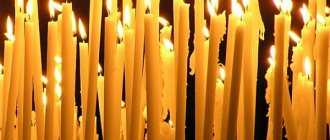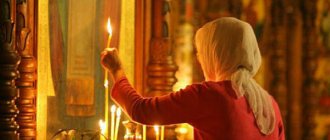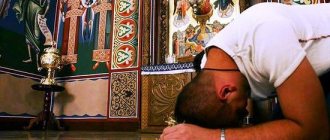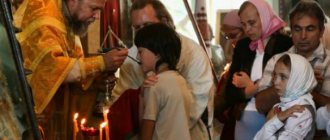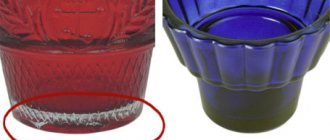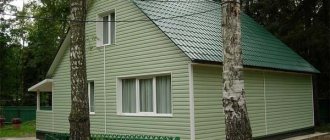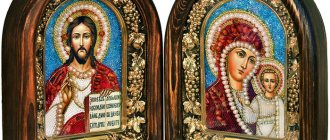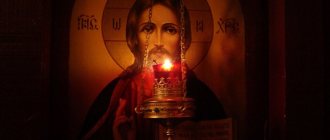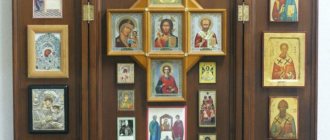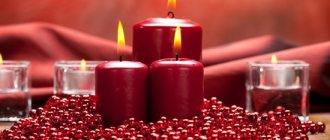In the homes of Orthodox Christians there are always lamps. They are placed next to especially revered icons. It is believed that the fire of the lamp cleanses the air from every abomination. Those who have such a possibility work hard to keep the lamps burning continuously. But modern data does not always allow this. There are not so many families where someone could always be at home. Consequently, in most cases, people light lamps when they return home and extinguish them when they leave. Even in such a sacred matter, you need to follow basic fire safety rules; on the contrary, holy fire can begin to behave like an ordinary one, and then trouble cannot be avoided.
You will need
- - Lamp.
- - Lamp oil.
- - Church candle.
- – Matches or lighter.
- – Gauze or cotton cloth.
Instructions
1.
You can purchase lamp oil and wick in a special church store or in a shop at the temple. If there are none in the neighborhood, then you can make the wick yourself. Cut a piece of bandage or other cotton fabric. Twist it tightly into a bundle and insert it into the float of the lamp. Instead of special lamp oil, you can use olive oil.
2.
Now some believers light lamps from whatever they have at hand. But previously it was believed that it was impossible to light a lamp easily with a match, but that one must strictly use a church candle, which is invariably present in an Orthodox home. You can purchase candles in the same church store. A candle can be lit either from a match or from a lighter. Do this and say the Lord's Prayer.
3.
a lamp
from the candle . For this occasion there is a special prayer: “Light up, Lord, the extinguished lamp of my soul with the light of virtue and enlighten me, Your creation, Creator and Benefactor, for You are the immaterial Light of the world, accept this material offering: light and fire, and reward me with inner light mind and fire to the heart. Amen".
4.
Make sure that the fire of the lamp is not too huge. The lamp, in any case, should not smoke. A light slightly larger than a match head will be enough. If you have several lamps in your house, light them one by one from the same church candle with the appropriate prayer. It is allowed to light lamps of different colors on different days. Dark lamps are prepared for fasting, but on holiday you need to light a red one.
The situation is like in a normal overseas action movie of the mid-eighties - a sharp commando is thrown into impenetrable green spaces, dusk is gathering, cruel monsters have crawled out of holes, and in order to escape, it is necessary to light a fire, but as luck would have it, everything that gives away the fire is lost. There is only one match left. As a result, the morning did not come for him, because he failed to light this very match
. What to do, uncreative mentality. And so that this does not happen to anyone, we read and remember how it is allowed to light it.
Instructions
1.
It would seem, what’s wrong with this?
Lighting a match
is easy. Perfectly correct. There's really nothing difficult here. We take it out of the box, apply a little pressure along the side of the same notorious box, and the job is done. The match is burning.
2.
This, as they say, is in impeccable conditions.
What if we consider that the data is not completely flawless? Possibly lost boxes. And in my pocket lies a lonely match that accidentally fell out. Then the plan of action is this: we recall the cartoons of the early or mid-eighties, where the characters, in order to light the dynamite fuse, draw a match over some incomprehensible place that contains both part of the thigh and the sole of the shoe. We analyze. The head of a match consists of special chemicals, which include sulfur and saltpeter. By themselves, they burn at a relatively low temperature. Therefore, in order to light a match
, a little bit of heat is necessary.
Similar heat is obtained by rubbing the head of a match against the rough surface of a box. If we think logically, then a match
can be lit on any rough surface. However, for the sake of honesty, it is worth noting that this should be a fine, rough surface.
3.
For example, steel will do.
Just not smoothly polished. Let's take, say, metal pillars that hold the entrance canopy or the iron door from the entrance. When the match head rubs against this surface, the temperature will be sufficient for ignition. But you need to do it quickly (strike a match on the surface). The pressure on the match
in this situation should be the same as what is traditionally applied to light it on the box. Otherwise, either the head will fly around or the match itself will break.
Note!
The fire of a lamp is not usually used for everyday purposes. Hang the lamp from the icon case or from the ceiling.
Are you thinking how to make a lamp with a wick with your own hands? This article provides tips on making a homemade lamp and wick for it. Read now!
How to make a lamp with a wick with your own hands?
Answers on questions
Home prayer. Icons in the house
What icons should be in the house
Red corner: where to hang icons in the house?
How to place icons in a home iconostasis?
How to pray in front of an icon?
What to do if the icon has become unusable? Using holy water and prosphora
How to use blessed oil
shutterstock.com
An integral part of a Christian's life is daily prayer at home. At home, the morning and evening rules, prayers before meals, prayers to the guardian angel, and following to Holy Communion are read.
Akathists and canons can be read at one’s own request or with the blessing of the priest. You can pray in any conditions, but it is better to do it in front of the icon.
The icon, being a visible image of the invisible Prototype, helps to pray more concentratedly and promotes the unity of the people standing in front of it during joint prayer.
What icons should be in the house?
There are no special rules about what kind of icons should be in the house.
Since most Christian prayers are addressed to the Lord Jesus Christ and the Mother of God, a pious tradition has developed to have at home the image of the Savior (for example, the Savior Not Made by Hands, the Lord Pantocrator) and His Most Pure Mother (Vladimir, Kazan, Feodorovskaya, Three-Handed or any other icon of the Mother of God). If a married couple got married, the main icons in the house may be the wedding couple, since it consists of the icons of the Savior and the Mother of God.
Otherwise, the choice of icons for the home depends on individual needs and preferences . At home, believers usually have an icon of their heavenly intercessor , whose name they bear, as well as icons of other saints revered in the family and icons of holidays.
Here are just some of the saints whose icons are especially revered by Russian Orthodox Christians:
| Icon of St. Nicholas the Wonderworker rublev.com | Saint Nicholas of Myra (the Wonderworker) is a particularly revered Christian saint; people pray to him for help in any life situations, for success in business and for the well-being of the family; |
| Icon of St. Seraphim of Sarov rublev.com | Seraphim of Sarov is one of the most revered Russian saints, defender of the Russian land; |
| Icon of St. Sergius of Radonezh rublev.com | Sergius of Radonezh is a Russian saint, to whom people pray for spiritual development, strengthening faith, and also for helping children in learning; |
| Icon of the Blessed Matrona of Moscow rublev.com | Matrona of Moscow is especially revered by women: they pray to her for marriage, for love and fidelity in the family, for the gift of children, as well as for help in everyday matters; |
| Icon of St. Panteleimon the healer rublev.com | Healer Panteleimon prays to him for healing and for the health of himself and his loved ones; |
| Icon of Saint Spyridon of Trimifunt rublev.com | Saint Spyridon of Trimifuntsky asks him for help in business activities and material wealth; |
| Icon of the Holy Martyr Tatiana rublev.com | • Holy Martyr Tatiana, patroness of sciences and education and assistant to teachers and students. |
It is also useful to acquire a family icon, that is, an icon that depicts the patron saints of all family members.
If you have to travel a lot, you can carry with you a folding bag with icons of Christ and the Virgin Mary. A folding icon is an icon consisting of two or three parts, with doors that can be closed so that the images are inside.
Red corner: where to hang icons in the house?
Photoxpress
Icons in the house need to be given a special place , visible and spacious , where the whole family can comfortably sit in front of the images for prayer. In the old days, such a place was called the “red corner”.
Orthodox churches are built with the altar facing the east, and in prayer it is also customary to face the east, so at home it is recommended to place icons against the eastern wall . However, if space is limited, you can hang icons on any side of the room - the main thing is that they are in a clean, open place and you can stand in front of them for prayer.
Prayer requires concentration and solitude, so it is wise to hang home icons in the bedroom. This will make it convenient to read morning and evening prayers.
It’s good if there is at least one icon in every room of the apartment , especially in the living room , where the whole family gathers, and in the nursery , so that the child can see the image of the Lord to whom he prays.
An icon (for example, an icon of the Savior) is also needed in the kitchen
An icon of the Intercession of the Most Holy Theotokos, an icon of the Trinity, or a Crucifixion is traditionally hung above the entrance to an apartment
How to place icons in a home iconostasis?
shutterstock.com
Icons can stand on a shelf or hang on the wall; you need to place or hang a lamp in front of them. If there is no free corner and all the walls are occupied, and it is undesirable to disturb the interior, then the icons can be placed on a bookshelf, chest of drawers or piano. In this case, you should check whether the books on the shelf match the shrine standing above them - sometimes it is better to remove or cover the books.
There should be nothing on top of the icons. Clocks, photographs, and television are inappropriate next to and under icons.
There should be no photographs or paintings between the icons, even if they are photographs of respected pious people, and the paintings have a religious plot.
However, consecrated objects can be stored next to the icons: prosphora, candles, oil from the relics (that is, from the lamp above the relics), wedding candles, candles from the Holy Sepulcher and other shrines.
When arranging icons, the principle of hierarchy should be observed . The image of Christ (on the right) and the Mother of God (on the left) or the wedding couple is always placed in the center; these are the main icons. Above them can only be the Holy Trinity or the Last Supper.
It is customary to place a small beautiful napkin - a shroud - on the shelf under the icon. According to folk tradition, the red corner with icons can be decorated with an embroidered towel or flowers.
How to use a lamp for a home iconostasis
There may be a lamp in the red corner. Depending on the design, it is placed or hung in front of the icons. The lamp should be lit while the whole family is reading prayers together in front of the icons, as well as on Sundays and holidays.
There is a pious custom to have several spare glass cups for lamps of different colors in the house and change them depending on the period of the year: red - from Easter to Ascension, blue - during Lent, green - the rest of the time.
How to pray in front of an icon?
RIA News
They read before the icons
- morning and evening prayers,
- prayers before meals
- holiday prayers on the day of the holiday,
- prayers to patron saints on name day.
in front of the icon in your own words .
To pray, you need to dress carefully, approach the icon with reverence, and stand straight, leaning on both feet. You can pray on your knees. During home congregational prayer, one person can read prayers, and everyone else repeats his words to themselves. On holidays, a candle or lamp is lit in front of the icons.
What to do if the icon has become unusable?
rublev.com
An icon, even if it is a paper reproduction, is a shrine, not a piece of furniture. If an icon is dilapidated or damaged and cannot be restored, it should not be thrown away .
You need to take the icon to the temple , where it will be burned in the church oven.
If this is not possible, then you can burn the icon yourself and bury the ashes in a place that will not be desecrated (for example, under a tree in the garden).
Using holy water and prosphora
Prosphora is a special consecrated church bread that is used during the Divine Liturgy: particles of health and repose are taken from the prosphora, which at the end of the service are immersed in a vessel with the Holy Gifts. The prosphora themselves are distributed to those praying. By submitting a registered note at the candle box before the service begins, you will receive a prosphora at the end of the Liturgy.
Holy water is consecrated in the church either at the Great Blessing of Water (January 18 and 19 - Epiphany Eve and Epiphany of the Lord), or at the small consecration, which takes place during some church holidays or, at the request of those praying, at a water-blessing prayer service. Holy water is taken from a special container in the temple, where it is stored after consecration.
Prosphora and a bottle of holy water are also kept in the red corner along with the icons. Prosphora is consumed in the morning on an empty stomach, holy water can be drunk throughout the day . There is a special prayer for accepting prosphora and holy water.
How to use blessed oil
During a pilgrimage to shrines, a believer can purchase oil consecrated from the relics of one or another saint or near one or another miraculous icon of the Mother of God: for example, oil from the blessed Matrona or from the icon of the Mother of God “The All-Tsarina.” Sometimes it is sold in church shops. According to the testimony of the saints, blessed oil, like holy water, can have great power if used with sincere faith.
The sick parts of the body are anointed with consecrated oil in a cross shape . If a person endures sorrow or temptation, the chest (to sanctify the heart and feelings) or the forehead (to sanctify the mind and thoughts) must be anointed.
Before this, you need to read a prayer (troparion or kontakion) to the saint at whose relics the oil was consecrated, or a prayer to the Mother of God if the oil was consecrated in front of a miraculous icon.
Blessed oil can also be used to light a lamp.
Source: https://rublev.com/molitvoslov/otvety-na-voprosy/domashnyaya-molitva-ikony-v-dome
Prayer before the lamp
Complete collection and description: prayer before a lamp for the spiritual life of a believer.
- Hello. Andrey!
Tatyana asked about the prayer to read before lighting the lamp, I also asked myself the same question and this is the prayer I found: “Light up, Lord, the extinguished lamp of my soul with the light of virtue and enlighten me, Your creation. O Creator and Benefactor, for You are the immaterial Light of the world, accept this material offering: light and fire, and arouse for me the inner light of the mind and the fire of the heart. Amen."
And I also ask for your prayers, I have an exam tomorrow. God bless and bless you!
-Thank you Tatiana
, note. Well, God bless and help you!
©2007—2017 Church of St. Basil the Great (on Gorka) city of Pskov. Contacts
WHY IS A LAMP LIGHTED IN FRONT OF AN ICON?
A lamp (Greek for “lamp”) is an oil-filled lamp lit in front of the icons, on the throne and on the seven-branched candlestick. The symbolic meaning of the lamp is the eternal flame of faith in Christ, dispelling the darkness of evil and unbelief.
In the homes of Orthodox Christians, it is customary to hang or place lamps on a stand in front of icons. This is an ancient pious tradition that symbolizes the constant prayer of Christians to God.
If there is no lamp in the house, then this house is, as it were, spiritually blind, dark, and the Name of God is not always glorified here.
Even in the Old Testament it is written: “And the Lord said to Moses... that the lamp should burn continually; outside the veil of the ark of the testimony in the tabernacle of meeting, Aaron (and his sons) must set it up before the Lord from evening to morning always; this is an everlasting statute throughout your generations; They shall always set up their lamps before the Lord on a clean candlestick” (Lev. 24:1-4).
There can be either one lamp or more in the house. There is a pious tradition of lighting unquenchable lamps in houses, which burn both at night and when the owners are not at home.
But in modern conditions this is not always possible or desirable, as it can become a temptation for non-believers or family members of little faith.
Most often, a Christian lights a lamp when he comes home and does not turn it off until he leaves home. If there are no lamps, church candles are lit during prayer.
Modern ascetics say that a lit lamp cleanses the air of all filth and then grace reigns in the house.
In no case should you use the fire from a lamp for domestic purposes - this is disrespectful to the shrine. It is not customary to light a lamp with a match; a church candle is used for this.
They used to say about irreverent monks in monasteries: “He lights a lamp with a match...”.
The lamp light does not need to burn very strongly and smoke; it is enough for it to be the size of one or two match heads.
For the lamp they use lamp oil (originally olive oil), which can be bought in a church shop in any church.
The lamp can only be lit from a candle, with prayer and reverence. There is a special prayer read when the lamp is lit: “Light up, Lord, the extinguished lamp of my soul with the light of virtue and enlighten me, Your creation, Creator and Benefactor, for You are the immaterial Light of the world, accept this material offering: light and fire, and reward me inner light to the mind and fire to the heart. Amen".
Saint Nicholas of Serbia wrote the following about why we light lamps:
Firstly, because our faith is light . Christ said: “I am the light of the world” (John 8:12). The light of the lamp reminds us of the light with which the Savior illuminates our souls.
Secondly, in order to remind us of the bright character of the saint, in front of whose icon we light a lamp. For the saints are called “sons of light” (John 12:36).
Thirdly, in order to serve as a reproach to us for our dark deeds, evil thoughts and desires, and in order to call us onto the path of the gospel light , so that we would be more zealous about fulfilling the commandment of the Savior: “Let your light so shine.” before men, so that they may see your good works” (Matthew 5:16).
Fourthly, so that it becomes our small sacrifice to the Lord , Who sacrificed all of Himself for us, a small sign of our great gratitude and bright love for the One from whom in our prayers we ask for life, health and salvation - all that can give only boundless Heavenly Love.
Fifthly, to frighten the forces of evil that sometimes attack us during prayer, diverting our thoughts from the Creator . For the forces of evil love darkness and tremble at light, especially that which serves God and His saints.
Sixth, to encourage us to sacrifice. Just as oil and wick burn in a lamp , submissive to our will, so let our souls burn with the flame of love, submissive to the will of God in all suffering.
Seventhly, to remind us that just as a lamp cannot light up without our hand, so our heart, this inner lamp of ours, cannot light up without the holy fire of Divine grace, even if it is filled with all virtue. For our virtues are fuel that the Lord ignites with His fire.
Church of the Life-Giving Trinity on Sparrow Hills
Lighting a lamp...
How good it is to pray on Christmas night (as on any other) by the light of only a lamp.
I want to share a prayer that you won’t find in every prayer book.
Prayer for lighting the lamp
Light, O Lord, the extinguished lamp of my soul with the light of virtue and enlighten me, Your creation, Creator and Benefactor! You are the immaterial light of the world. Accept this material offering: light and fire, and give me inner light to the mind and fire to the heart.
Post creation time: Saturday, January 3, 2009 at 23:00 in the Pearls section. You can follow comments on this entry via the RSS 2.0 feed. You can reply, or send a trackback from your website.
Source: https://xn—-8sbfxoeboc6b7i.xn--p1ai/molitva-pered-lampadoyu/
Church candles and lamps
The custom of lighting lamps during prayer existed back in the days of the Old Testament. During divine services, the first Christians also used candles not only to illuminate the catacombs where they were hiding from the pagans, but also as a sign that Christ is the light of the world.
Old Believers light lamps and candles in front of images not only in the temple, but also at home. In an Old Believer church you will not find a chandelier with electric light bulbs - only candles or lamps burn on it. There are also churches in which there is no electric lighting at all.
Symbol of a church wax candle in Christianity
A candle is a symbol of prayerful burning before God. Wax and wick symbolize the body and soul of a person, the softness of the wax reminds a person of obedience to God. Blessed Simeon of Thessaloniki, a 15th-century liturgist, explains the use of wax for making candles:
The wax brought and burned signifies our purity and the innocence of the offering. It, as used for seals, is used to designate a Divine sign. As soft and docile, wax is a sign of repentance for perseverance and a symbol of obedience. As capable of perceiving any image, it is a symbol of the re-creation of man.
As collected from flowers, it serves to depict the grace of the Holy Spirit. Since it is collected from almost all flowers, it serves as a sign of offering to God from everyone and everything. Shining in the fire and uniting with it, wax means deification.
Due to the fact that it holds everything together and, melting, is preserved, it means the unity and constancy of love and peace.
Church lamps in the temple. Oil in Rus' and today
In front of the icons, not only candles are lit, but also lamps into which oil is poured. Initially it was oil - olive oil, a symbol of God's mercy towards people. In the Sacrament of Unction, oil is also consecrated, with which sick people are then anointed so that the Lord can heal them.
Olives do not grow in Rus'; olive oil was only imported, so they began to pour sunflower oil into lamps. And nowadays, in many churches, purified (refined) sunflower oil is poured into lamps. The lamp burns for a long time, almost a day, until the oil in it runs out. The main thing is to choose and adjust the wick correctly.
Typically, cotton threads are used for the wick of lamps and candles.
Reading the Old Testament, we see examples of how people make sacrifices to God from their labors - fruits and animals, i.e. everything that they themselves ate.
Now that the New Testament has come, believers bring bread (prosphora) and wine to God for the Eucharist, wax for candles and oil for lamps. It must be remembered that the quality of the products must be the best.
Even in the Old Testament, the Lord commanded through the prophet Moses:
Do not offer any animal that has a blemish on it [to the Lord], for it will not procure you favor (Leviticus 22:20).
We cannot bring to God what does not suit us ourselves, what we ourselves will not eat.
Nowadays, it often happens that so-called “lamp” oil, that is, Vaseline oil, is poured into lamps, and candles are made not from pure wax, but with the addition of paraffin, stearin, etc.
Many people, remembering that they need to offer the best to God, purchase candles made of pure wax and bring them to the temple to place in front of the images. But we should also remember that the candles purchased in the temple are our sacrifice for its maintenance, repair, and improvement.
Even if these candles are not made from the purest wax, it is still better to buy them in the temple than to bring them with you “from outside.”
It is customary to place candles in front of the images and hold them in hands during the Easter service, during the evening service on the eve of the twelfth and patronal feasts, during the great consecration of water, during the reading of the twelve Gospels on Maundy Thursday (the service of the Passion of Christ). During the celebration of the Sacraments, candles are also held in hands: at Baptism, Wedding, Unction. At the same time, to prevent melted wax from dripping onto the floor, it is customary to put a paper circle on the candle.
The candles standing on candlesticks in front of the icons symbolize our fiery prayer to the Lord, the Mother of God and the saints. Candles should be lit with prayer. In many Old Believer churches, before lighting a candle, it is customary to pray two bows with a prayer in front of the image where the candle is placed, for example:
- before the image of the Savior with the Jesus Prayer;
- in front of the image of the Mother of God - “ Most Holy Lady Theotokos, save us ”;
- in front of the Cross - “ Glory, Lord, to Your Honest Cross ”;
- in front of the icon of the saint - a corresponding prayer, for example, “ To St. Nicholas of Christ, pray to God for us .”
Then, having made the sign of the cross without bowing, you should light the candle and place it level, without tilting. If there is no space on the candlestick, the candle must be placed; it will be placed later. After this, you should bow again with the appropriate prayer. In some churches, the number of bows “before the candle” and “after the candle” may be different.
You cannot walk around the temple to light candles during those moments of the service when walking is prohibited. It is best to come to the temple before the start of the service and light candles so as not to distract others from prayer and bowing as required by the Charter.
According to custom, only clergy and choir members can ascend to the solea (the raised platform in front of the altar). Those who wish to place a candle to the icons in the iconostasis can pass the candle to parishioners who have the blessing to climb the solea.
In some churches, near the choir there are special boxes from which candles are placed on candlesticks in front of the iconostasis.
The need to arrange candles or remove stubs from a candlestick is not a valid reason for walking around the temple when this is prohibited by the Church Charter. In order for our sacrifice to be pleasing and pleasing to God, it must be offered without violating the decorous order required for Christian service.
Source: https://ruvera.ru/svechi_lampady
How and why do you light a lamp and burn incense at home?
Content
Priest Andrei Chizhenko explains.
According to Orthodox doctrine, man is a two-part being: spiritual and physical. The soul is the image and likeness of God in man. Through the body, a person connects with the material animal world. This is the great task of man. To deify oneself (that is, to begin the path of ascent to God, the path of knowing Him, uniting with Him, or rather, with Divine uncreated energies) and through deification to deify and sanctify the rest of material nature, since man is its center and king. It seems to exist at the intersection of two worlds - spiritual and material. Based on this, the human body is a collaborator with the soul in the matter of salvation. It is the essence of the temple of God. This is why Orthodoxy treats the body so carefully. This can be seen from the burial order.
Therefore, all Church Sacraments and, as a consequence, divine services also have a dual nature. Example: in the Sacrament of Baptism, the priest invokes the name of the Holy Trinity - this is the spiritual main component. But the substance of baptism is completely material – water. Sacrament of Communion. Its core is the Body and Blood of Christ. And the substances for the Sacrament are prosphora, wine, water. Therefore, Orthodox worship influences the grace of the Holy Spirit not only on the soul, but also on the body. Anointing oil (touch), ringing bells, singing (hearing), icons, painting (sight), prosphora, Epiphany water (taste), burning incense (smell).
The family is a small church. This is also a kind of service to God and one’s neighbors. Naturally, we want God’s grace to sanctify ourselves and our homes, to protect us from all evil and defilement. In addition, in paradise the righteous and holy angels are in continuous worship - the praise of the Almighty. Therefore, with God’s help, we try to continue church services (within reasonable limits, of course) at home. Similar to this is the monastic rite of panagia (from Greek - “all-holy”), when the Mother of God prosphora, from which a piece is taken out in honor of the Virgin Mary at the proskomedia after the Liturgy, the monks solemnly transfer from the temple to the refectory, where they eat it with certain prayers, and then begin meal. Thus, the Liturgy seems to continue, and it continues in the cell conditions of monastic dormitories. In a spiritual sense, approximately the same thing happens to us when we seem to “bring the temple and worship home,” arranging from our lives a worship service, a sacrifice to the Almighty. That’s why, for example, earlier in every Orthodox home there was a “red” (beautiful from outdated) corner where icons were placed, incense was burned, and a lamp was lit. Often it was made to the east, like the altar of a temple. As a matter of fact, the red corner is a kind of home altar. In general, this is a very good tradition. Correct. The family makes a feasible sacrifice to God and arranges a dwelling for Him in their house, and He, of course, settles in it, because the loving hearts of His children long for a meeting with their Heavenly Father.
It is not always possible, of course, to arrange a red corner to the east in modern conditions, but, in principle, every family can do it. This is our expression of love for God. The only thing I would like to say about this from experience... It is still necessary to SEPARATE a place in the house for the images of saints, so to speak, to clear it of other worldly things. Otherwise, you often see in houses how icons are filled with glasses or other completely worldly things. Sometimes other involuntary sacrilegious acts occur when icons are placed together with the increasingly popular Japanese netsuke gods, various “money toads” that “bring” wealth and success, or erotic paintings. Of course, this is unacceptable. A person must understand himself, Whom he serves: Christ or Belial. It is better to throw away or burn pagan idols and not keep them at home.
As for the lamp, for example, for me it burns constantly for days. Let us remember the parable of the ten virgins (see Matt. 25:1–13). In my opinion, a burning lamp, caring for it, buying lamp oil, candles for lighting it is our feasible sacrifice to Christ (a kind of tactile prayer to God) and a feasible financial sacrifice to the Church (lamp oil, candles, wicks, the lamp itself). Some people light a lamp before prayer. This is also good and beneficial. God will accept any sacrifice feasible for a person if it is made with reverence and a loving heart. The lamp, of course, is lit in front of the icons.
From my experience I will say that for a lamp it is better to take purified specialized lamp oil. No matter how much I tried to use regular sunflower oil and even refined sunflower oil, it burned poorly, the lamp smoked and became clogged.
As for incense - incense and incense, it is also quite possible to use it at home. You just need to not imitate censing by a clergyman in the temple (this is still the prerogative of the priest), but rather burn incense rather than burn incense with it.
Now in church shops there is a very large selection of both incense and censers. There are special “spiders” - light metal structures that are attached to the lamp. There is a platform on top of them. Incense is placed on it. From the warmth of the lamp fire, the metal heats up - and the incense begins to smell fragrant. There are special stationary censers - clay, porcelain, metal. They need coal. It is lit, placed in a censer, and pieces of incense are placed on top. The lid of this censer has special holes for smoke. You can light censers before prayer, you can walk through the house with the Jesus Prayer or any other prayer, filling its rooms with a heartfelt appeal to God, which rises into the sky as easily as smoke from a censer.
Burnt coals should be disposed of as follows. If you live in a private house, it is advisable to make a hole in clean soil in the front yard or garden, perhaps under a tree or bush, where you can shake out the ashes (including incense) from burning consecrated things. You can throw ashes into running water or into a river. If you live in an apartment, then it is also advisable to burn the remains of consecrated things somewhere in the park or in flower beds, then bury the ashes in clean soil. You can shake out the remains of burnt coal into flowerpots with indoor plants.
What I would like to warn against.
There is no need to turn your entire house into a church. It is important to understand that you should not only pray in the house, but also live. One or two or three places in the house allocated for spiritual needs are enough. Leave space in your home for yourself, your spouse, and your children. Everything is good in moderation.
Priest Andrey Chizhenko
Lower menu
Views today: 8378
The opinion of the portal's editors may not coincide with the point of view of the authors of publications.
Use of site materials in printed publications and on Internet resources is possible only with a link to the portal.
Prayer before lighting the lamp
We advise you to familiarize yourself with the prayer before lighting the lamp with several options in Russian, with a full description and pictures.
A lamp (Greek for “lamp”) is an oil-filled lamp lit in front of the icons, on the throne and on the seven-branched candlestick. The symbolic meaning of the lamp is the eternal flame of faith in Christ, dispelling the darkness of evil and unbelief.
In the homes of Orthodox Christians, it is customary to hang or place lamps on a stand in front of icons. This is an ancient pious tradition that symbolizes the constant prayer of Christians to God.
If there is no lamp in the house, then this house is, as it were, spiritually blind, dark, and the Name of God is not always glorified here.
Even in the Old Testament it is written: “And the Lord said to Moses... that the lamp should burn continually; outside the veil of the ark of the testimony in the tabernacle of meeting, Aaron (and his sons) must set it up before the Lord from evening to morning always; this is an everlasting statute throughout your generations; They shall always set up their lamps before the Lord on a clean candlestick” (Lev. 24:1-4).
There can be either one lamp or more in the house. There is a pious tradition of lighting unquenchable lamps in houses, which burn both at night and when the owners are not at home.
But in modern conditions this is not always possible or desirable, as it can become a temptation for non-believers or family members of little faith.
Most often, a Christian lights a lamp when he comes home and does not turn it off until he leaves home. If there are no lamps, church candles are lit during prayer.
Modern ascetics say that a lit lamp cleanses the air of all filth and then grace reigns in the house.
In no case should you use the fire from a lamp for domestic purposes - this is disrespectful to the shrine. It is not customary to light a lamp with a match; a church candle is used for this.
They used to say about irreverent monks in monasteries: “He lights a lamp with a match...”.
The lamp light does not need to burn very strongly and smoke; it is enough for it to be the size of one or two match heads.
For the lamp they use lamp oil (originally olive oil), which can be bought in a church shop in any church.
The lamp can only be lit from a candle, with prayer and reverence. There is a special prayer read when the lamp is lit: “Light up, Lord, the extinguished lamp of my soul with the light of virtue and enlighten me, Your creation, Creator and Benefactor, for You are the immaterial Light of the world, accept this material offering: light and fire, and reward me inner light to the mind and fire to the heart. Amen".
Saint Nicholas of Serbia wrote the following about why we light lamps:
Firstly, because our faith is light . Christ said: “I am the light of the world” (John 8:12). The light of the lamp reminds us of the light with which the Savior illuminates our souls.
Secondly, in order to remind us of the bright character of the saint, in front of whose icon we light a lamp. For the saints are called “sons of light” (John 12:36).
Thirdly, in order to serve as a reproach to us for our dark deeds, evil thoughts and desires, and in order to call us onto the path of the gospel light , so that we would be more zealous about fulfilling the commandment of the Savior: “Let your light so shine.” before men, so that they may see your good works” (Matthew 5:16).
Fourthly, so that it becomes our small sacrifice to the Lord , Who sacrificed all of Himself for us, a small sign of our great gratitude and bright love for the One from whom in our prayers we ask for life, health and salvation - all that can give only boundless Heavenly Love.
Fifthly, to frighten the forces of evil that sometimes attack us during prayer, diverting our thoughts from the Creator . For the forces of evil love darkness and tremble at light, especially that which serves God and His saints.
Sixth, to encourage us to sacrifice. Just as oil and wick burn in a lamp , submissive to our will, so let our souls burn with the flame of love, submissive to the will of God in all suffering.
Seventhly, to remind us that just as a lamp cannot light up without our hand, so our heart, this inner lamp of ours, cannot light up without the holy fire of Divine grace, even if it is filled with all virtue. For our virtues are fuel that the Lord ignites with His fire.
Church of the Life-Giving Trinity on Sparrow Hills
Prayer that I say when lighting a lamp
- font size decrease font size increase font size
Light, O Lord, the extinguished lamp of my soul with the light of virtue and enlighten me, Your creation, Creator and Benefactor. For You are the immaterial Light of the world, accept this material offering: light and fire, and reward me with inner light to the mind and fire to the heart. Amen.
prayer for lighting the lamp
Orthodox prayer honored when lighting a lamp
Light, O Lord, the extinguished lamp of my soul with the light of virtue and enlighten me, Your creation, Creator and Benefactor. For You are the immaterial Light of the world, accept this material offering: light and fire, and reward me with inner light to the mind and fire to the heart. Amen.
Hello, Father! Tell me how to light a lamp at home correctly? I recently heard that you need to light a candle first, and then a lamp from it. Another one sets it on fire with a lighter, after which I did the same. And is it necessary to read any prayer before lighting it?
The lamp should be lit from a candle.
Prayer recited when lighting a lamp
“Light up, Lord, the extinguished lamp of my soul with the light of virtue and enlighten me, Your creation, the Creator and Benefactor. For You are the immaterial Light of the world, accept this material offering: light and fire, and reward me with inner light to the mind and fire to the heart. Amen".
The answer to this question was read by 1863 visitors
Healing Spring
Prayer for lighting candles and lamps.
Lord, accept this sacrifice from my labors and reward me with Your grace. Warm my cold heart in prayer. Give me grief1 to ascend, like the fire of a candle. Decorate m| faith, hope, love, meekness, like flowers, from which this wax is collected.
“Burn, O Lord, the extinguished lamp of my soul with the light of virtue and enlighten me, Your creation, Creator and Benefactor, for You are the Immaterial Light of the world, accept this material offering: light and fire, and reward me with inner light to the mind and fire to the heart. A min."
